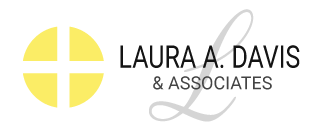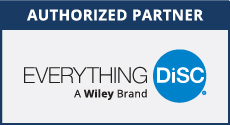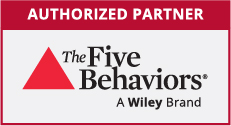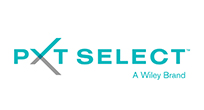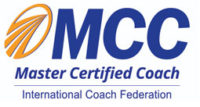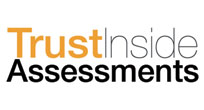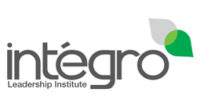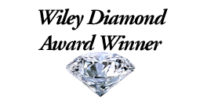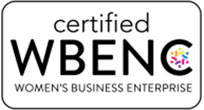Humans have always talked about the ever-increasing rate and speed of change. Yet in the past, disruptions were usually followed by periods of relative stability.
In the 21st century, change is now perpetual, pervasive, and exponential. Changes are perpetual meaning they are occurring all the time in an ongoing way. Changes are pervasive meaning changes are unfolding in multiple areas of life at once. Exponential means changes are accelerating at an increasingly rapid rate.
Certainly, prior to the pandemic a number of trends were already in play:
 Technological Disruptions: advancements in IT, automation, artificial intelligence, and more have been in play for years as exemplified by companies like Uber and Airbnb. Trends that are accelerating due to the global health crisis include telehealth, ecommerce, and online learning. Essential social and emotional skills required now include the ability to change direction quickly, communicate effectively, and facilitate resistance to change.
Technological Disruptions: advancements in IT, automation, artificial intelligence, and more have been in play for years as exemplified by companies like Uber and Airbnb. Trends that are accelerating due to the global health crisis include telehealth, ecommerce, and online learning. Essential social and emotional skills required now include the ability to change direction quickly, communicate effectively, and facilitate resistance to change.
 Shifting Organizational Structures: many global organizations had already moved to flatter, matrixed structures from siloed departments prior to the onset of CoVid 19. As a result of the crisis, many organizations are looking at more flexible, hybrid work arrangements that require rethinking how work gets done. People must learn to share power, work on multiple teams, and collaborate across organizational boundaries to accomplish a common vision and goals.
Shifting Organizational Structures: many global organizations had already moved to flatter, matrixed structures from siloed departments prior to the onset of CoVid 19. As a result of the crisis, many organizations are looking at more flexible, hybrid work arrangements that require rethinking how work gets done. People must learn to share power, work on multiple teams, and collaborate across organizational boundaries to accomplish a common vision and goals.
 Evolving Workforce: likewise, organizations had already been grappling with the challenges of leading people from five generations in the workplace with varied economic, social, and cultural backgrounds, not to mention the transient gig economy workforce. Never before has it been so important to navigate workforce diversity by exhibiting emotional intelligence, empathy, and compassion.
Evolving Workforce: likewise, organizations had already been grappling with the challenges of leading people from five generations in the workplace with varied economic, social, and cultural backgrounds, not to mention the transient gig economy workforce. Never before has it been so important to navigate workforce diversity by exhibiting emotional intelligence, empathy, and compassion.
The global crisis saw changes occur in months, weeks, and even days whereas previously they would have taken years. While some companies can be cited as success stories of agility and resilience, it is safe to say that all leaders struggle to address the overlapping changes coming at us in tidal waves of uncertainty, confusion, and emotion.
Most models of leadership weren’t built for this unrelenting change. The human mind has been trained to think linearly and locally in a relatively certain world. We used to be able to expect the future to somewhat resemble the past.
Coaches can challenge leaders to question their assumptions about the future to see potential opportunities in disruptions. One of my favorite quotes comes from writer, philosopher, and psychologist Eric Hoffer who wisely recognized that, “In times of change, the learners inherit the earth while the learned find themselves beautifully equipped to deal with a world that no longer exists.” He also is famously quoted as saying, “the only way to predict the future is to shape it.”
In my experience, I have gleaned 3 key principles and distinctions for helping people not only survive, but also thrive in times of great change and disruption.
Change, by its very nature, often leaves people feeling confused, vulnerable, and fractured at a time when resilience, cohesion, and collaboration are required more than ever. It is abundantly clear that the leaders, teams, and organizations that do not skillfully navigate change and embrace a new form of leadership will fail.
So, what type of leadership will be the most effective for our emerging future?
FROM | TO |
Key #1: Leader as Hero/Heroine | Leader as Coach |
Key #2: Command & Control, Fear-Based Environment | Environment of Trust & Psychological Safety |
Key #3: Team of the “Best & Brightest” | Self-Aware, Self-Directed Continuously Learning Teams |
Key #1: Encourage an Agile Leadership Style with the “Leader as Coach” NOT as the Charismatic Hero/Heroine or Ultimate Authority.
One of the keys to successfully navigate a disruptive future is to question the assumptions of the traditional leadership paradigm. A leadership style of “I know it all so follow me” is totally unrealistic given the realities of the new world of work.
While we can intellectually see the folly of this kind of thinking, the leadership paradigm of the charismatic hero/heroine swooping in to save the day still exists. No one person can possibly know and master knowledge across the dizzying array of domains leaders need to comprehend today. Those who try are destined to fail.
Instead, authentic leadership is humble and more vulnerable thereby inspiring the necessary trust and psychological safety that drive innovation, inclusion, and team performance. Many people misunderstand the word humble so I want to make a key distinction here. Someone who is humble can also be confident and competent. They just have the self-awareness and self-esteem to know they don’t have to be “the smartest person in the room.” The Enron debacle at the beginning of this century showed us the kind of toxic culture that results when that kind of belief system is encouraged.
One of my favorite stories of this kind of leadership comes from Hubert Joly’s recent book The Heart of Business.
He exemplified humility when he took over the helm of the failing retailer in 2012. He donned the Best Buy khakis and blue shirt uniform and went into the retail stores to learn what was working and what wasn’t directly from the front line. He wore a nametag that said “CEO in training” to show he was open to learning from the people who knew the operation best.
Since being confident enough to be humble isn’t always easy, coaches can help by encouraging leaders to do their own personal and spiritual growth work. Whether you call that mindfulness, emotional intelligence, or something else, self-awareness is the foundation from which a leader can learn to adapt and flex their leadership style to the needs of the situation and the other people involved.
Key #2: Performance Thrives in an Environment of Psychological Safety and Trust NOT in an Environment of Command and Control through Fear
“The presence of fear in an organization is the first sign of weak leadership,” according to Timothy R. Clark, author of The Four Stages of Psychological Safety. His definition of psychological safety is very clear. It is a condition in which you feel 1) included, 2) safe to learn, 3) safe to contribute, and 4) safe to challenge the status quo.
Many of us are familiar with Google’s “Project Aristotle” research findings on what makes a great team. The results showed that the most important factor associated with high-performing teams is an environment of psychological safety.
One of the most impactful places to begin cultivating psychological safety is by understanding the deeper nature of trust. Many leaders I coach are trustworthy but are not trusted by all of their stakeholders. A crucial concept I share with them is the different behavioral elements of trust. The four key elements based upon research by Integro Leadership Institute are: Acceptance, Openness, Straightforwardness, and Reliability.
While all the behaviors that build trust are important, different personality styles place a different priority on these 4 elements. For example, the element or behavior that someone considers the most important in others often reflects their own individual strength. The challenge arises when their natural limitation is the most important priority of another person with whom they work.
Understanding and working with this concept can go a long way towards developing deeper levels of trust throughout an organization.
Key #3: Self-Aware/Self-Directed Teams that Continuously Learn Are Required NOT Teams Comprised of the “Best and the Brightest” Individual Players
Leadership is a process of continual learning and unlearning. Futurist author Alvin Toffler said, “The illiterate of the future are not those who can’t read or write, but those who cannot learn, unlearn, and relearn.”
This quote reminds us that we need to continually question our assumptions and challenge ourselves to unlearn old, dated ways of thinking and doing. As we question our assumptions, we need to update our mental models and maps, use new technologies and tools, and keep course correcting based upon our best ideas and best practices.
One of the reasons Patrick Lencioni’s perennial bestseller, The Five Dysfunctions of a Team is so popular is it vividly illustrates through a relatable story how an organization can have the best product, the most money, the brightest talent, and appear to have the best market positioning, but still fail. If people aren’t able to work cohesively and leverage their collective strengths, they will not be successful.
Let’s honor facilitative leadership that brings out the best in leaders at all levels. Let’s create environments where psychological safety and trust are the norm. And finally, let’s encourage self-directed work teams of continuous learners who can grow and change in times when their creativity and innovative thinking is needed most.
For help with these and other people issues in your organization contact us at 678-637-8977 or laura@lauraadavis.com.
